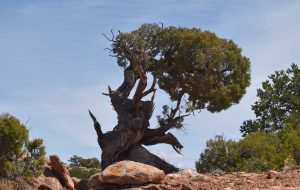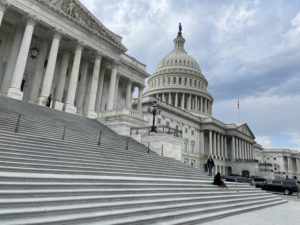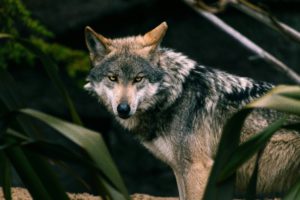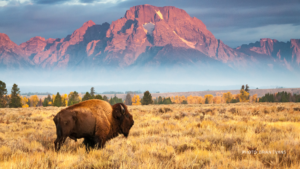For immediate release January 24, 2024
Media contacts:
Greta Anderson, Western Watersheds Project (520) 623-1878; greta@westernwatersheds.org
Randi Spivak, Center for Biological Diversity (310) 779-4894; rspivak@biologicaldiversity.org
Lindsay Larris, WildEarth Guardians (720) 468-0842; LLarris@wildearthguardians.org
Vera Smith, Defenders of Wildlife, (303) 917-7222; vsmith@defenders.org
BOISE, Ida. – The U.S. Fish and Wildlife Service today announced its determination that the pygmy rabbit (Brachylagus idahoensis) may warrant protection under the Endangered Species Act (ESA). Today’s decision comes as a result of a petition submitted by conservation groups in March 2023.
The pygmy rabbit is the world’s smallest rabbit and is threatened by livestock grazing, oil and gas extraction, invasive non-native grasses and wildfire. Pygmy rabbits require intact sagebrush for virtually all of their winter diet and for cover from predators. They also need areas with deep soil for constructing burrows where they shelter from predators and safeguard their babies. The current range of the pygmy rabbit encompasses parts of Wyoming, Utah, Idaho, Nevada, Montana, Colorado, California and Oregon.
“It’s never ‘good news’ that species are found to be at risk of extinction, but we’re pleased that the pygmy rabbit is getting the attention it deserves from the U.S. Fish and Wildlife Service and we’re optimistic that federal protection can help reverse the alarming downward population trends,” said Greta Anderson, deputy director of Western Watersheds Project.
“This is a great first step toward protecting the tiny but mighty pygmy rabbit and the habitat it needs to survive,” said Randi Spivak, public land policy director at the Center for Biological Diversity. “The once vast sagebrush sea ecosystem is facing a triple whammy of accelerated climate change, agriculture and industrial development. Endangered Species Act protection is desperately and urgently needed to save these wondrous little creatures.”
“We’re relieved to finally see the Fish and Wildlife Service taking enormous threats to the pygmy rabbit’s survival seriously,” said Lindsay Larris, wildlife program director for WildEarth Guardians. “This positive 90-day finding puts the rabbit hopping towards obtaining crucial Endangered Species Act protections in the near future.”
“We are thrilled to see the pygmy rabbit clear this hurdle towards Endangered Species Act protection,” said Vera Smith, senior federal lands policy analyst at Defenders of Wildlife. “The alarming declines in multiple species that depend on healthy sagebrush habitats signal the need for immediate action to better protect our sagebrush sea habitats across the West.”
The 90-day finding triggers a review by the US Fish and Wildlife Service to evaluate if the pygmy rabbit warrants protections under the Endangered Species Act.
Background
The once-vast Sagebrush Sea is under stress from fire intensified by invasive plants, development, livestock grazing, oil and gas extraction, drought and climate change. An estimated 1.3 million acres are lost every year, with just 13.6% of the original ecosystem still ecologically intact, according to a recent U.S. Geological Survey report. Scientists have recommended stronger conservation management for the Sagebrush Sea and identified a network of places that should be prioritized for protection because they are relatively intact or could be restored.
Within the past 50 years, populations of the once-common pygmy rabbits have progressively dwindled, according to state surveys. In Wyoming their population has declined by 69% to just 15% occupancy. Utah has alarmingly low occupancy rates of just 7% to 13%; occupancy rates average 23% in Idaho and 22% in Nevada.
Pygmy rabbits were first proposed for listing under the Endangered Species Act in 1991. In 2003 several conservation groups submitted another petition. In September 2010 the Fish and Wildlife Service found that the rabbits were not warranted for listing. It acknowledged the threats to pygmy rabbits from habitat loss and degradation, development, livestock grazing, conversion and energy development, but said it did not have enough data to show those threats rose to the level of extinction risk.
New occupancy surveys point to dramatic population declines and low occupancy rates. The pace of habitat loss and degradation of the sagebrush habitat upon which the rabbit depends has accelerated to unsustainable levels. Given the rabbits’ high dependency on sagebrush and perennial grasses, increasing loss of sagebrush habitat is a direct threat to their survival. In addition, an emerging virus first detected in pygmy rabbits in 2022 poses a serious threat to their survival.






